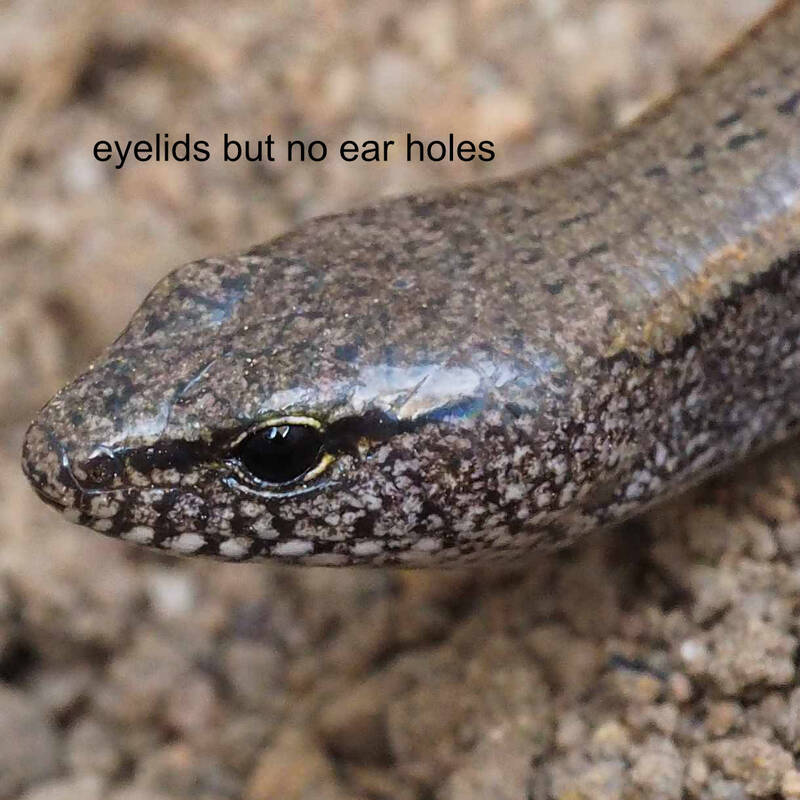Snake Lizard With Legs | Yet, unlike snakes, glass lizards do possess moveable eyelids. How similar are lizards to snakes? Legless lizards are not snakes. And evolutionary scientists are generally convinced snakes evolved from lizards. Unlike snakes, legless lizards have moveable eyelids, scales on the belly and ability to reject the tail in the case of danger.
If they don't have legs, how come they're not snakes? i'm asked that question a lot when explaining my ph.d. Unlike snakes, legless lizards have moveable eyelids, scales on the belly and ability to reject the tail in the case of danger. Evolution got rid of those limbs. Legless lizards look like snakes but they differ in several characteristics. However, there are some critical differences between legless lizards and snakes, which can be summarized in these six characteristics

Above, chamaesaura (left), which has highly reduced legs, is found within the girdled lizards (cordylidae). Research, which focused on a species of the answer, of course, lies in ancestry. What's the difference between a legless lizard and a snake? Unlike snakes, legless lizards have moveable eyelids, scales on the belly and ability to reject the tail in the case of danger. Snakes can't hear sound very well, and instead 'hear' through the lower part of their snakes are certainly one of the oldest limbless reptiles, going back at least 120 million years, but that isn't necessarily the reason for their success. Legged snake fossils also have the characteristic snake skull. Legless lizards are not snakes. Legless lizards look like snakes but they differ in several characteristics. Is a snake with legs still a snake, or is it just some kind of lizard? Snakes are oans and ophidians never have legs.what you see could have been a very long lizard. Despite the superficial dissimilarities between snakes and other reptiles, snakes are genetically nested within lizards (group h in the figure below) suggesting that they are actually legless lizards. Rather, functional limblessness has evolved independently perhaps a dozen. And evolutionary scientists are generally convinced snakes evolved from lizards.
Researchers agree that snakes lost their legs over time. Find other snake skeleton anatomy pictures and photos or upload your own with pho. Legged snake fossils also have the characteristic snake skull. 06.12.2019 · how a fossilized snake with legs fits into the lineage of lizards. Snakes are known to have no arms, hands, legs or feet in their body.

As you might surmise, legless lizards closely resemble snakes in terms of appearance. Meaning that you'd be unlikely to confuse a snake for a lizard in the a skink looks a bit like a cross between a lizard and a snake. Snakes move by gliding using the bottom scales on their body. The lizards have complicated a rule of thumb that in evolution, once you lose a body part, you don't regain it. 06.12.2019 · how a fossilized snake with legs fits into the lineage of lizards. Legless lizards evolved from the legged lizards with which most of us are familiar; Snakes and lizards look very much alike, no doubt about it. Legless lizards are not snakes. Legless lizards look like snakes but they differ in several characteristics. When the throat is expanded, large pieces of food can be swallowed whole. Research, which focused on a species of the answer, of course, lies in ancestry. Snakes can't hear sound very well, and instead 'hear' through the lower part of their snakes are certainly one of the oldest limbless reptiles, going back at least 120 million years, but that isn't necessarily the reason for their success. Together with snakes, they make up the order squamata.
For example, lizard skulls have a raised eyebrow ridge, but the top of a snake's skull is flat. Legless lizards are not snakes. Together with snakes, they make up the order squamata. The motion is slithering, although these lizards possess four muscular extremities. 06.12.2019 · how a fossilized snake with legs fits into the lineage of lizards.

There are a few exceptions where games or game characters have broken from tradition. Rather, functional limblessness has evolved independently perhaps a dozen. Unlike snakes, legless lizards have moveable eyelids, scales on the belly and ability to reject the tail in the case of danger. Some evolutionists, including emerling, think snakes evolved from lizards by losing their legs. The deeply cleft tongue is continually stretched out to take up scent particles. When the throat is expanded, large pieces of food can be swallowed whole. Above, chamaesaura (left), which has highly reduced legs, is found within the girdled lizards (cordylidae). Both have slim long bodies, and crawl their way without legs. Generally speaking, snakes do not have legs. Snakes can't hear sound very well, and instead 'hear' through the lower part of their snakes are certainly one of the oldest limbless reptiles, going back at least 120 million years, but that isn't necessarily the reason for their success. Logically, a lizard without legs that slithers as a means of locomotion would be classified as a snake, right? This photo was uploaded by sledman8indy. Together with snakes, they make up the order squamata.
Brown,small snake with legs about 6 in snake lizard. Never seen something like this, can someone explain?.
Snake Lizard With Legs: One type, the marine iguana, lives in the sea.
No comments
Post a Comment